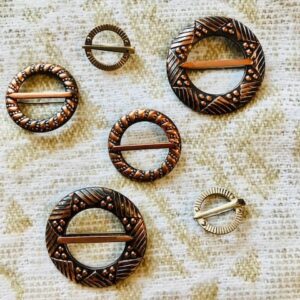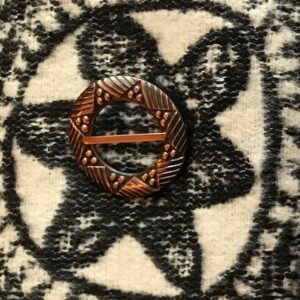A small description of horseshoe brooches:
Wise men say that brooches have been used to fasten clothes for more than 3000 years. The first brooches are thought to be forms of vaulted brooches from the Mediterranean area that date back to around the late 2nd millennium BC, ensuing from the development of fasteners (pins). It was initially a practical item to fasten clothes but soon it was carrying the function of an adornment, it gained popularity and the use of it spread. The first items that bare the similarity to later horseshoe brooches were taken into use around 2000 years ago in the outreach of Provincial Rome. It is known that the first Estonian horseshoe brooches originate from Viru County balustrade tomb. The peak of its popularity lasted from the 8th to the 13th century but they were being worn until the 17th century. Archaeologists have done a great job and found multiple brooches among which the ones in a good shape originate from burials or hidden findings. When found broken, it could have been the case of vandalism or fire burial.
People are often interested if there were any differences between the men’s and women’s brooches or what the different patterns meant and how the brooches were being worn – heels up or down. It is difficult to truly analyze these patterns as the early wearers of the brooches have been dead for around 1000 years and more, and unable to answer these questions. It is also extremely difficult to make clear distinction between men’s and women’s brooches based on the findings – sometimes we know that the finding belonged to a man or a woman based on the other items along but both genders usually wore the same brooches as it was a daily used fastener. However, based on the findings, it is known that brooches were being worn heels upside.











